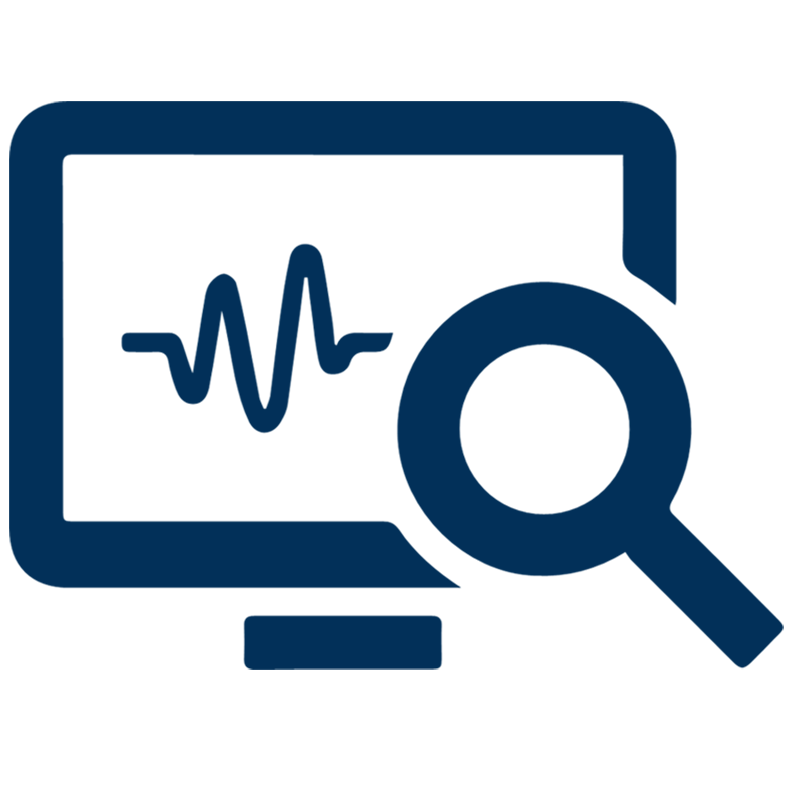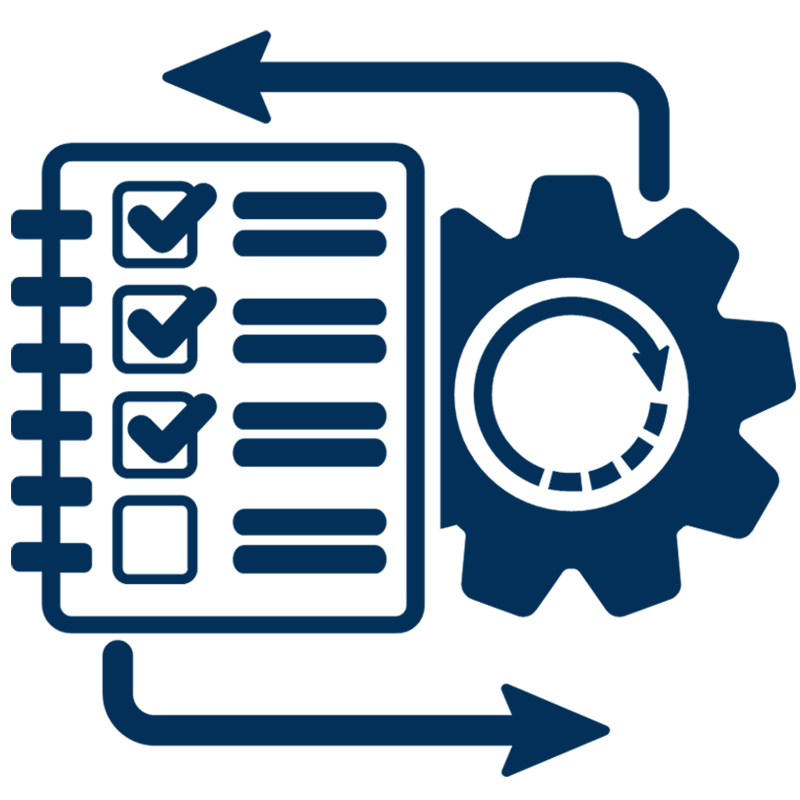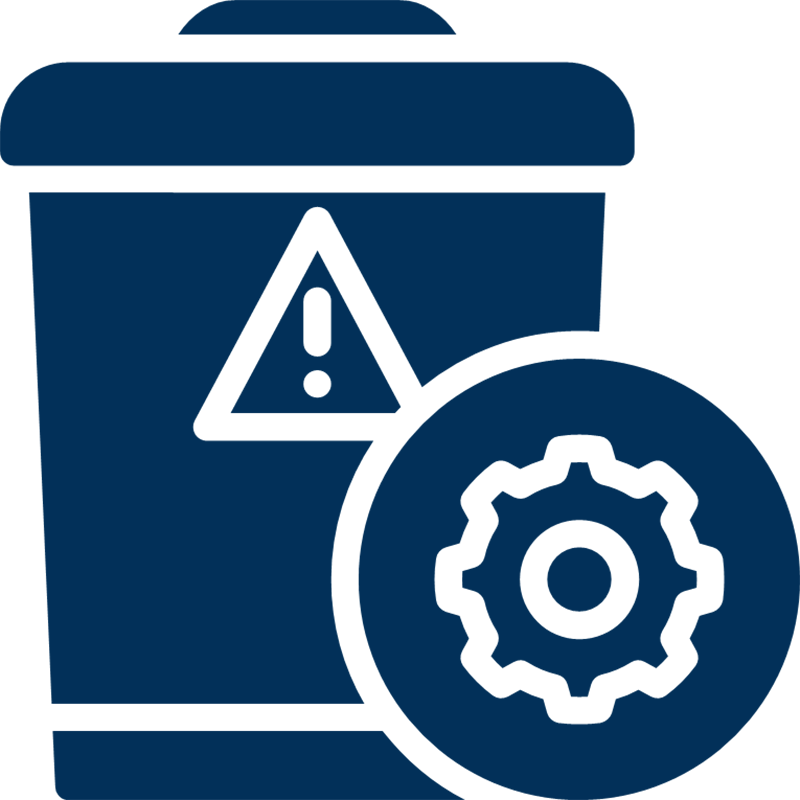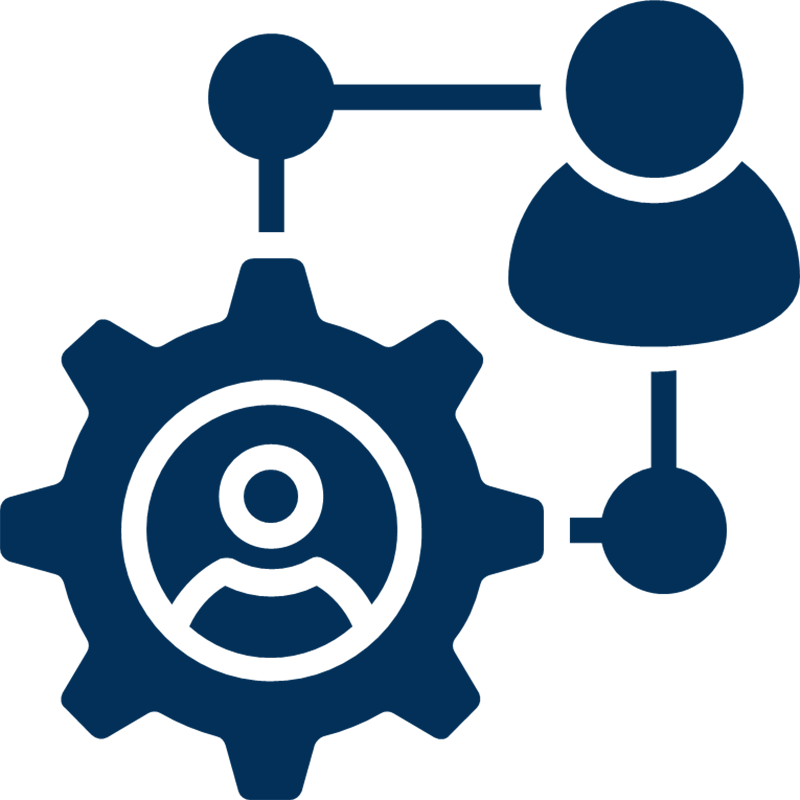Use Cases.
Our use case database tracks 133 use cases in the global enterprise technology ecosystem.
Filters allow you to explore use cases quickly and efficiently.
- (20)
- (20)
- (16)
- (10)
- (6)
- View all 9 Industries
- (20)
- (16)
- (13)
- (10)
- (7)
- View all 7 Functional Areas
- (16)
- (13)
- (11)
- (11)
- (11)
- View all 14 Enabled Capabilities
Selected Filters
133 use cases
|
Livestock Monitoring
Livestock monitoring solutions use wearable devices such as electronic bands with the capability to stream data to the cloud to help farmers make better decisions by giving them access to more information about the health, status, and location of livestock. Wearables are mounted on the animal and monitor indicators such as heart rate, respiratory rate, blood pressure, digestion level, and other vitals that indicate health levels. State-of-the art systems monitor eating, rumination and inactive behavior. They can detect signs of diseases like ketosis, subclinical mastitis and pneumonia days before their symptoms are visible to the human eye. This allows you to save time and money by catching and treating a sick animal before she needs medical treatment, shows a drop in milk production or needs to be culled. In addition to health, these sensors can also be used for Tracking location of liverstock, monitoring reproductive cycles, and maximizing livestock livelihood.
|
|
Machine Condition Monitoring
Machine condition monitoring is the process of monitoring parameters such as vibration and temperature in order to identify changes that indicate a reduction in performance or impending fault. It is a necessary component of Predictive Maintenance solutions and allows maintenance to be scheduled prior to failure, or other actions to be taken to prevent damages to the machine and loss of production. Condition monitoring also provides value beyond improving maintenance schedules. For example, improved visibility into machine operations can indicate the root causes of product defects and can support optimization of energy consumption.
|
|
Machine to Machine Payments
Machine to machine payments are automated payments betwee machines via digital wallets without the action or confirmation by humans. Autonomous vehicles such as cars, forklifts, and trucks and other industrial machine can pay for their own fuel, maintenance, road tolls, and insurance. In the sharing economy, industrial machines can also earn money by renting themselves to other machines and being paid by those machines based on usage. These solutions will be enabled by the development of 5G mobile networks. Blockchain technology can be used to govern payments. Examples of Machine to Machine payments include power and energy trading between smart grids and homes, industrial machines paying 3D printers to print replacement parts, and connected vehicles paying for parking. New business models are being developed around this emerging model of financial transaction.
|
|
Machine Translation
Machine translation refers to fully automated software that can translate source content into target languages. Humans use machine translation to help them render text and speech into another language, or the translation software may operate without human intervention to automate record keeping or other administrative functions. Machine translation tools are often used to translate large amounts of information that could not be cost effectively translated the traditional way. The quality of machine translation output can vary considerably according to the strength of the underlying algorithms and the amout of training that has been conducted in the desired domain and language. Translation companies can also use machine translation to augment the productivity of their human translators. Machine translation functionality is increasingly embedded in wearable and other smart devices in order to provide simultaneous translation during meetings.
|
|
Manufacturing Process Simulation
Manufacturing process simulation software uses animated, interactive models to replicate the operation of an existing or proposed production system. Simulation enables organizations to analyze manufacturing system efficiency and safely test process changes to improve throughput and profitability. Simulation adds tremendous value to the production process in manufacturing plants, especially in process manufacturing. Today companies mainly use it to identify process improvements and to simulate the impact of new technology introductions into an existing production system. Engineers can adjust the virtual model of a process, test it and determine suitability on a “new” production line, reducing the time and cost requirements associated with physical testing.
|
|
Manufacturing System Automation
Manufacturing system automation integrates software and machinery so that manufacturing processes are run autonomously through computer programming. The goal of manufacturing system automation is to minimize the amount of human assistance needed in the manufacturing process. These systems provide constant feedback loops and adjust controlling parameteres in response to feedback from PLCs and Smart Sensors installed on machinery. Sensors are commonly embedded in new equipment or can be installed on legacy equipment. Automation has been achieved by various means including mechanical, hydraulic, pneumatic, electrical, electronic devices and computers, usually in combination. The benefit of automation includes a reduction of costs related to labor, electricity, water, gas, and scrap, as well as improvements to quality, accuracy, and precision. Manufacturing system automation can also reduce changeovertimes, thereby enabling small batch size production and mass customization.
|
|
Mass Customization
Mass customization is a manufacturing technique which combines the flexibility and personalization of custom-made products with the low unit costs associated with mass production. Mass customization can be viewed as collaborative efforts between customers and manufacturers, who have different sets of priorities and need to jointly search for solutions that best match customers' individual specific needs with manufacturers' customization capabilities. The objective is to enable customization based on customer requirements without a corresponding increase in production costs. At its limit, it is the mass production of individually customized goods. However, it is more commonly applied to small batch sizes that meet the requirements of specific market niches. A key premise of mass customization is the imperative to postpone the task of differentiating a product for a specific customer until the latest possible point in the supply network. However, process improvements must also be supported by investments in technology that enable the Tracking of unique products or batches and flexible production processes.
|
|
Material Handling Automation
Material handling automation uses a wide range of automatic guided vehicles, robotics, and drones to transport and store materials without human intervention. Equipment automatically lift, rotate, and shift materials, fetch and carry loads to and from racks, store and retrieve materials, transport loads over long distances, and can deliver and collect loads to and from a wide range of conveyors, processing machines, palletising systems and automated storage and retrieval systems. The improved accuracy and precision of these systems improves efficiency, reduces cycle times, and creates a safer working environment. They are commonly deployed to handle sensitive or hazardous materials and to operate in harsh conditions. Material handling systems use sensors, such as lasers and radars, to identify and stop when in proximity to obstacles that cross their path. They are also equipped with readers to read RFID tags or other identifiers that are attached to loads. And they are typically controlled by a warehouse management system that tracks orders, inventory and equipment status, and coordinates routes and distribution plans. This is critical part of a just in time supply chain Orchestration system.
|
|
Mesh Networks
A mesh network is a local network topology in which the infrastructure nodes, such as bridges, switches, and gateways, connect directly, dynamically and non-hierarchically to many other nodes and cooperate with one another to efficiently route data to and from clients. The lack of dependency on a central node allows for every node to participate in the relay of information. Mesh networks dynamically self-organize and self-configure, which can reduce installation overhead. The ability to self-configure enables dynamic distribution of workloads, particularly in the event that nodes fail. This in turn contributes to fault-tolerance and reduced maintenance costs. Mesh networks facilitate IoT adoption by extending the network in a reliable manner so that other devices can join local networks. They allow devices that are not powerful enough to join Wi-Fi or cellular networks to join the IoT network. The self-healing and self-configuring features of mesh networks also help to make networking more efficient by reducing energy consumption, downtime, and administration requirements.
|
|
Metaverse
|
|
Microgrid
A microgrid is a localized group of electricity sources and loads that normally operates connected to and synchronous with the traditional wide area synchronous grid, but can also disconnect to island mode and function autonomously as physical or economic conditions dictate. In this way, a microgrid can effectively integrate various sources of distributed generation (DG), especially Renewable Energy Sources (RES) - renewable electricity, and can supply emergency power, changing between the island and connected modes.Microgrids are typically supported by generators or renewable wind and solar energy resources and are often used to provide backup power or supplement the main power grid during periods of heavy demand. A microgrid strategy that integrates local wind or solar resources can provide redundancy for essential services and make the main grid less susceptible to localized disaster.
|
|
Mixed Reality
Mixed Reality implements digital information to enhance the real environment, and allows the users to interact with digital information or object in the same way as in the real world, thus making the environment richer and closer to reality. MR not just overlays the object, but also able to anchor it to the real world.In the industry sector, the Mixed Reality can be used for production assistance, training assistance, remote assistance, On-field support, and Customer onboarding experience.
|
|
Movement Prediction
Movement prediction is a new field of deep-learning system that can do the very human task of interpreting what is happening in a photo or video and predicting the likely future movement of objects in the image. The system can express the most plausible futures by adding animations to still images, such as cars that would ultimately crash, people who might move in a street, or a train that might roll forward on its tracks. Current generations of computer vision focus on Tracking past movement or identifying objects in the present. Movement prediction provides a new direction for exploring computer vision by giving machines the ability to understand how objects move in the real world in order to predict future action.
|
|
Object Detection
Object detection is an application of computer vision and image processing that deals with detecting instances of semantic objects of a certain class in digital images and videos. Well-researched domains of object detection include face detection and pedestrian detection. Object detection has applications in many areas of computer vision, including image retrieval and video surveillance. There are three tasks in this process - image classification, to predict the type or class or an object in an image, object localization to locate the presence of objects in an image and indicate their location, and object detection to locate the presence of objects and types or classes of the located objects in an image.
|
|
Occupancy Monitoring
Occupancy monitoring tracks the occupany of different locations and supports automated decision-making to best utilize space. They are most commonly used in shared working spaces such as hot desks and meetings rooms but are also used for other defined spaces such as store aisles and restrooms. Passive proximity sensors detect the presence of people in the defined area and send information to the system. The sensors typically use infrared or beacon technologies. Imaging systems can also be used to gain more sophisticated data about the type of occupant, such as gender or age. This information can also be made available to management to help them better plan their capacity or to inform others of space availability.
|
|
Onsite Human Safety Management
Onsite human safety management refers to a collection of systems, processes, and tools, that ensure worker safety at construction, manufacturing, or other industrial sites. They are commonly used in industries that have hazardous materials or heavy vehicles or assets moving in close proximity to people, such as in construction and aerospace. The introduction of IoT devices improves the level of visibility into employee health and safety. Intelligent Wearables such as watches, helmets, and vests can continuously capture vital physical metrics like heart rate, skin temperature, movement, activity, and location. In parallel, environmental sensors record critical information about working conditions and potential dangers. By leveraging an advanced analytics platform situational data from sensors can be distilled into actionable insights that are visualized at a management console or on mobile devices. In addition to identifying potential workplace hazards, time series data enables better decision-making related to the design of facilities to systematically reduce EHS risks.
|
|
Outdoor Environmental Monitoring
Outdoor environmental monitoring is the collection of measurements from the physical world that determine the status and trends of environmental conditions. It is critical to the protection of human and animal health, environmental sustainability, and policy development. Outdoor environmental monitoring systems use sensors and low power wide area networking technologies to collect information about the environment related to parameters such as air and water quality, soil conditions, forest conditions, natural disaster warnings, fisheries, and water and snowfall levels. Most systems will also include data analysis and visualization tools to generate insights on the data collected. Some systems may include alerts or notifications based on the tolerance levels of each parameter measured.
|
|
Perimeter Security & Access Control
Perimeter security and access control systems protect the external perimeters of a facility, control access to restricted areas, and detect and monitor anomalies. Access control includes the control of persons, vehicles, and materials through entrances and exists in a controlled area or premises. Perimeter detection, in contrast, is the detection of access to the outer limits of a detection area by means of physical barriers, sensors on physical barriers, or exterior sensors. Intrusion alarm systems identify entry or attempted entry of a person or an object into the area and respond to real security breaches and ignoring costly false alarm sources. Perimeter security is the first stage of intrusion security because it detects a breach and triggers an alert, which is a proactive system. Access control relates to permitting or denying access to a person or entity requesting access which is more interactive than intrusion detection, a reactive system.
|
|
Personnel Tracking & Monitoring
Personnel Tracking and monitoring tracks the activities and locations of employees within a facility or operational area. It is commonly used to monitor attendance, control access to restricted areas, track occupancy and movements between different areas, and guarantee workplace security. Wearables can be used to track employees' physical conditions such as heartbeats and temperature. These systems are usually made up of Beacons embedded in an access card or device and locators that detects Beacons and connects them to the cloud, such as gateway hubs with omni-directional antennae or gateway radars.
|
|
Picking, Sorting & Positioning
Picking, sorting and positioning systems either automate material handling processes or support employees by providing precise guidance through the order processing and fulfillment process. Automated solutions are based on robotics that use scheduled process flows, digital IDs, or machine vision to determing picking, sorting and positioning behavior. Prevision guidance solutions work by increasing the ease of identifying the product-bin combination by removing the need for employees to manually locate and identify the right product-bin combination. They direct warehouse employees using physical displays, virtual or Augmented Reality Wearables, and other devices that can signal which products to put in which bin. Usually, tags such as barcodes, RFID tags, or QR codes are used to identify both the bin and the product. These inventory systems are usually integrated with other supply chain systems such as order management systems, enterprise resource planning systems, and ecommerce systems.
|
|
Port Automation
Port automation includes a wide range of automation technologies applied to cranes, Containers, handling equipment, trucks, gates, and reporting processes to improve the throughput and accuracy of port operations. Sensors help to connect different elements of port infrastructure together to enable data-analytics, increase the visibility of data, and support timely business decision making. Real-time analytics are also used to run smart operations and to automates decisions, such as cargo status, paperwork status, availability of port facilities, shipment arrivals, and shipment schedules. Connectivity infrastructure optimizes the flow of information to manage trade flow efficiently as they can connect remotely with other ports to ensure seamless import and export processes. Some automation systems have extended to include sensors to gather data on water, temperature, visibility, and wind speed to manage traffic more efficiently at the port. These external environment factors can be used to predict the best time to have a ship arrive and depart the port, according to the maximum cargo load and other factors.
|
|
Predictive Maintenance
Predictive maintenance is a technique that uses condition-monitoring sensors and Machine Learning or rules based algorithms to track the performance of equipment during normal operation and detect possible defects before they result in failure. Predictive Maintenance enables the reduction of both schedule-based maintenance and unplanned reactive maintenance by triggering maintenance calls based on the actual status of the equipment. IoT relies on Predictive Maintenance sensors to capture information, make sense of it, and identify any areas that need attention. Some examples of using Predictive Maintenance and Predictive Maintenance sensors include vibration analysis, oil analysis, thermal imaging, and equipment observation. Visit our condition-based maintenance page to learn more about these methods.
|
|
Predictive Quality Analytics
Predictive quality analytics uses statistical algorithms and Machine Learnings to anticipate quality and safety risks before they occur, offering the opportunity to take timely and targeted countermeasures. As a first step, all available external and internal data sources are prioritized, consolidated, and correlated. Comprehensive data analyses are then performed and predictive models are developed in an iterative process, making use of a variety of evaluation techniques. Depending on the parameters which flow into the model, it is possible with these methods to forecast not only defects that appear shortly in the future but also ones which could lead to a warranty claim in the long term. The models are thus capable of integrating data sources, making efficient Data Mining possible and leading to user-friendly evaluations which in turn can be converted into easily readable reports for the end-user or managers at the reporting level. Wisely used, predictive quality analytics can lead to significant savings in warranty costs, improve customer satisfaction, and reduce scrap rates.
|
|
Predictive Replenishment
Predictive replenishment anticipates when customers will need to replenish inventory by analyzing sales forecasts and inventory levels. Typically, merchandise is sold to stores on a calendar basis or as a reaction to a purchase order, not based on actual consumption. Stores risk running out of inventory when actual consumption patterns vary from the set schedule, or they must hold excess inventory which ties up working capital. Predictive replenishment considers multiple factors such as seasonality, inventory, ordering patterns, lead time forecasts, special orders, product lifecycle phase, and service level goals, to improve replenishment forecasts for the next period. Most predictive replenishment systems are collaborative, linked with customer's demand forecasting or point of sale systems to automatically gather input into the replenishment forecasting models. Predictive replenishment can also be applied to industrial situations, such as component or raw material inventory in a factory, or spare parts inventory at a utility.
|
|
Predictive Waste Reduction
Predictive waste reduction identifies causes for production waste and prescribes focused actions that minimize rework and scrap. Predictive analytics and automated root cause analysis are employed to anticipate process failures that yield wastage. It includes four steps: monitoring current production performance, predicting excessive waste levels, analyzing the cause of waste issues, and preventing causes for waste and rework.
|
|
Process Control & Optimization
Process control and optimization (PCO) is the discipline of adjusting a process to maintain or optimize a specified set of parameters without violating process constraints. The PCO market is being driven by rising demand for energy-efficient production processes, safety and security concerns, and the development of IoT systems that can reliably predict process deviations. Fundamentally, there are three parameters that can be adjusted to affect optimal performance. - Equipment optimization: The first step is to verify that the existing equipment is being used to its fullest advantage by examining operating data to identify equipment bottlenecks. - Operating procedures: Operating procedures may vary widely from person-to-person or from shift-to-shift. Automation of the plant can help significantly. But automation will be of no help if the operators take control and run the plant in manual. - Control optimization: In a typical processing plant, such as a chemical plant or oil refinery, there are hundreds or even thousands of control loops. Each control loop is responsible for controlling one part of the process, such as maintaining a temperature, level, or flow. If the control loop is not properly designed and tuned, the process runs below its optimum. The process will be more expensive to operate, and equipment will wear out prematurely. For each control loop to run optimally, identification of sensor, valve, and tuning problems is important. It has been well documented that over 35% of control loops typically have problems. The process of continuously monitoring and optimizing the entire plant is sometimes called performance supervision.
|
|
Public Transportation Management
Public transport management merges behavioral science and systems engineering to determine how to improve the flow of passengers on mass transit, better understand demand, and offer policy solutions to transit agencies to help them respond to challenges. It uses information gathered by monitoring traffic flow, transportation utilization rates, residential and commercial space planning, behaviorial pattern changes, transporation routes, road utilization, congestion, and waiting times.This information can also be made available to the public so that they can better plan their journeys on public transportation, and may increase tge frequency of overall ridership. External environmental conditions such as weather and accidents can also be monitored and analyzed so that contingency plans can be created. Public transportation assets such as trains and buses also need to be monitored and maintained to ensure that they are in the best condition to minimize break downs. Typically, it includes an analytics platform, a dispatch system to alert and direct drivers and operators, fleet management systems, and asset management systems.
|
|
Public Warning & Emergency Response
Public warnings and emergency response systems are used to detect and prevent disasters, and alert citizens in the area to take the right precautions when dangerous situations arise. Bus stop displays, connected billboards or road displays, and even displays inside buses and connected cars can help disseminate accurate and timely information to people who are in the affected area. Messages can also be tailored according the demographics of the user of the particular device, such as adding new languages, specific instructions, routing, and video feeds of nearby areas to help them best protect themselves when disaster strikes. Smart Sensors can detect conditions that may cause an emergency, such as gas pipeline pressures reaching its threshold, and automatically trigger a response that alleviates the pressure or triggers and alarm. Advanced analytics can also be used to adjust the thresholds and limits according to different environmental conditions.
|
|
Rapid Prototyping
Rapid prototyping is the application of tools and processes to build and test prototypes during the proof of concept or proof of value phase in the product development process. It is generally used to establish product viability and to test product-market fit before investing in mass production. Rapid prototyping frequently accomplished with 3D printing technologies. However, it can also be achieved by using pre-made circuit boards, pre-programmed applications, hardware and Software Development Kits, or even with digital twins that emulate the desired product.
|
|
Real-Time Location System (RTLS)
Real Time Locating Systems (RTLS) provide knowledge by delivering precise visibility of critical assets, supply chain, manufacturing, and human, in real-time. For transportation and logistics enterprises, this knowledge means having end-to-end visibility and Traceability of all Containers, pallets, and packages. For manufacturers, it enables intelligent management and flow of all critical assets, whether in the facility or at a sprawling storage yard. Under security and safety operations, it means controlling employee access and ensuring they do not linger in hazardous areas beyond safety requirements.RTLS or indoor positioning systems (IPS) can be simply described as GPS on steroids but used indoors for the purpose of Tracking, locating and monitoring the activity of people and things. It is used in healthcare, manufacturing, smart warehouses, hospitality, education, and other industries for the purpose of maximizing workflow efficiency, safety, wayfinding, and inventory and asset control and has been proven to deliver significant return on investment (ROI).
|































.png)
